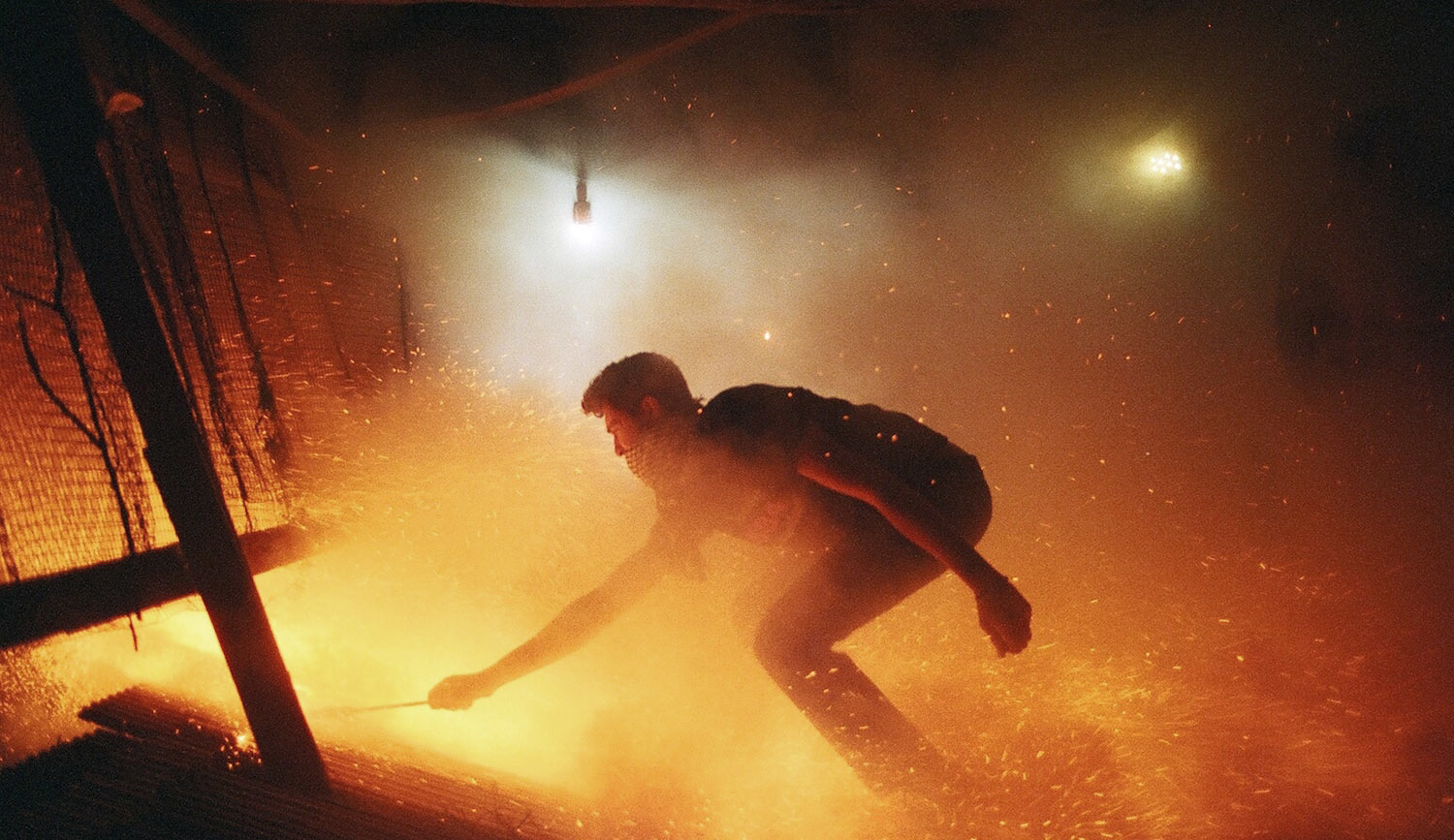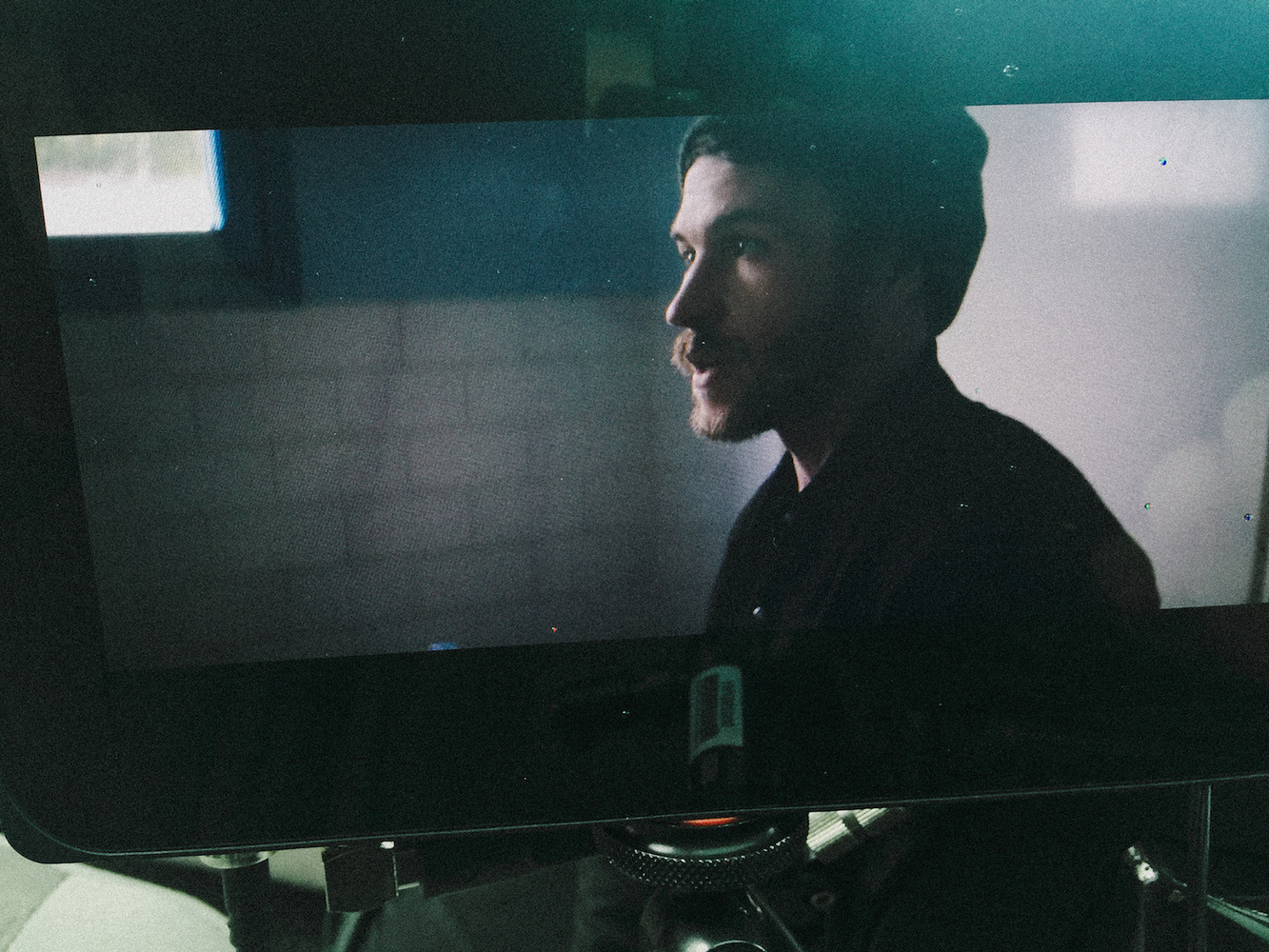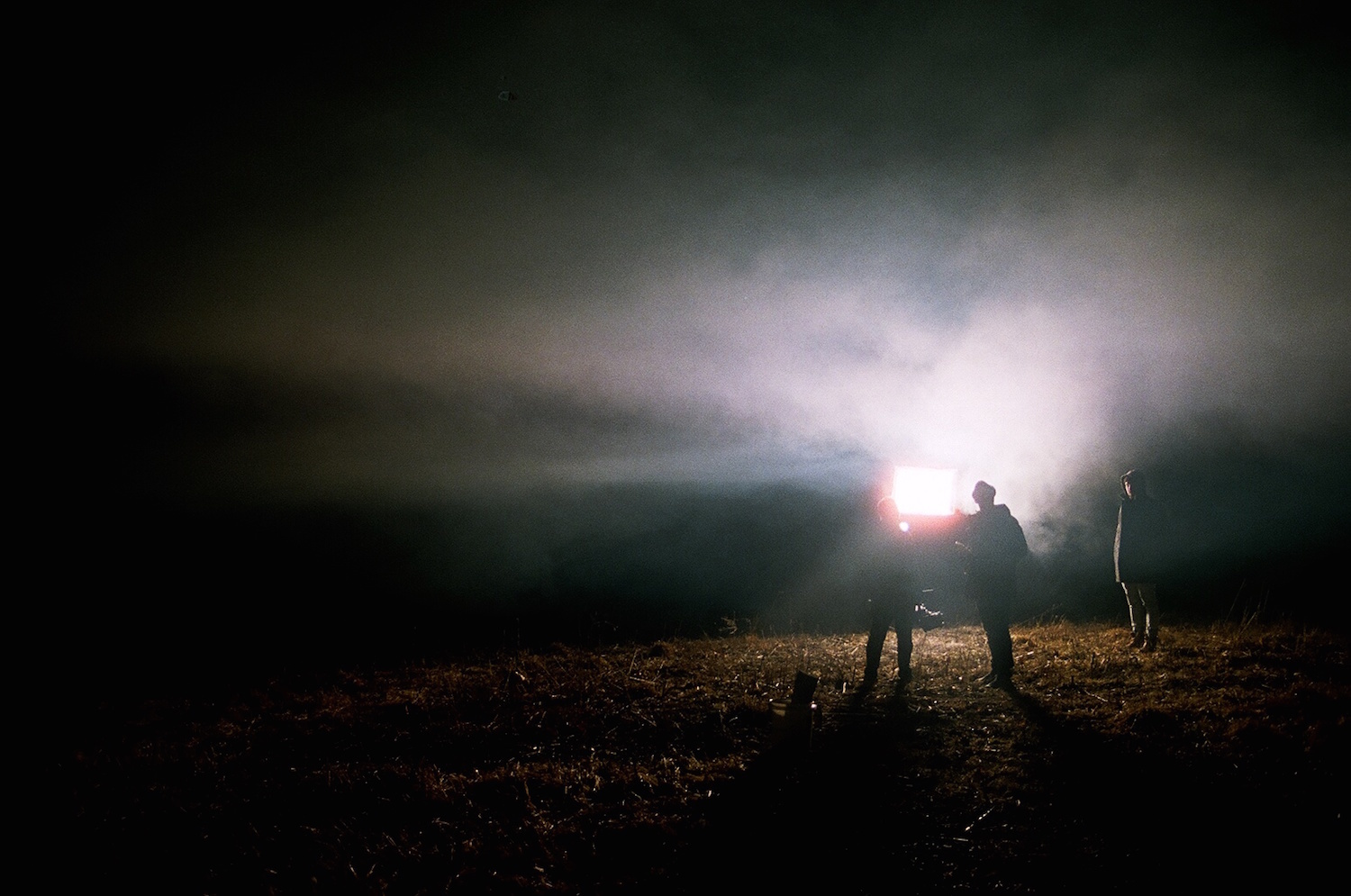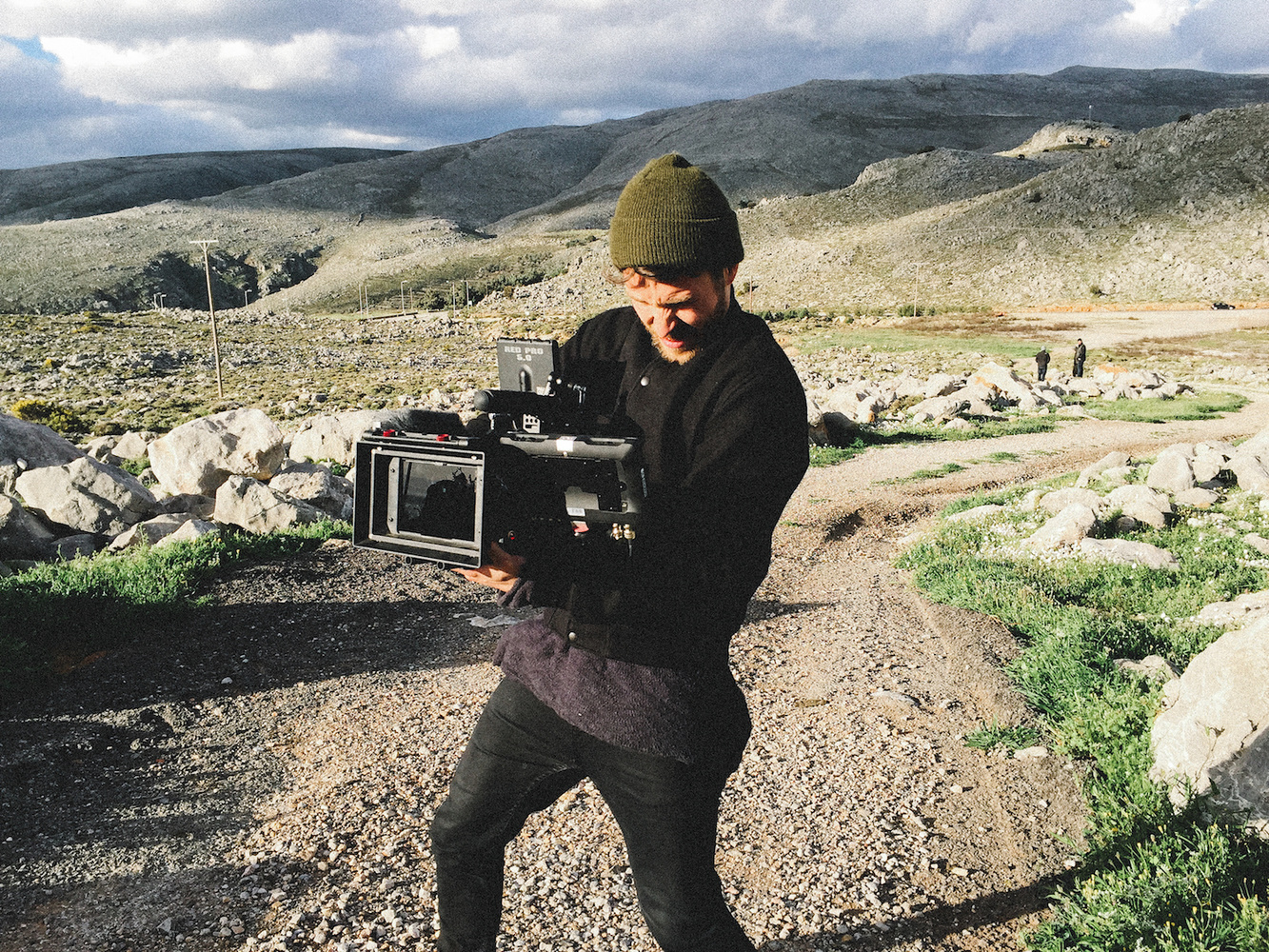In case you missed it, ‘Rocket Wars’ is a five minute film that has changed the game. It's breaking new ground and heralds in a beautiful new era in filmmaking. 150,000+ views and a Vimeo ‘Staff Pick’ are pretty amazing, but what’s ground breaking isn’t that the film is just a beautiful cacophony of visual and aural eye and ear candy. What’s fascinating is the fertile new ground it thrusts us headlong in to, and how it engages us. How did the filmmakers pull this off – and importantly – what can we learn from them to apply to our own projects?
Rocket Wars represents some of the most engaging and sublime documentary short filmmaking I’ve seen in years. If you haven't seen it, stop what you're doing and spend the next five minutes enjoying it.

In many ways, we should all be aspiring to produce this sort of work, regardless of what genre we find ourselves in. Any project that puts connecting with our subject at the epicenter of the piece, and engages us through a rich tapestry of meaningful, beautiful visual and aural cinematic set pieces deserves praise.
So how was it accomplished?
Peeling Back The Layers
It’s such a strange event – it really feels like a war. These guys are friends but a week before the event they are like sworn enemies. We wanted it to not just be something ‘visual’, but also poetic
– Khalid Mohtaseb, Director of Photography, Rocket Wars
Rocket Wars takes a distinct hybrid, (and cinematic) approach to traditional documentary work.
This approach is starting to find it’s way into photography as much as filmmaking (the recent photographic project by Joey L of his portraits of guerilla fighters in Kurdistan, combining beautiful, creative editorial portraiture with documentary subjects and content, being a recent example).
Rocket Wars was the brainchild of filmmakers at the creative collective Variable, and specifically Director Salomon Ligthelm, and Director of Photography Khalid Mohtaseb, both of which kindly gave up some time to talk about their journey on the project.
Like a couple of visual scientists, Salomon and Khalid are constantly experimenting, creating and playing with complex and wonderful concoctions that yield new ways of seeing the world around us. They are no strangers to working together - their track record on the recent film Anomaly which I previously wrote about – demonstrates this.

So what can we learn from them?
My belief is if we better understand their process and thinking, we stand a better chance at pushing the boundaries on our own projects. This is what they had to say:
1. Finding Inspiration
I found the idea [for Rocket Wars] totally by chance – a video of the event popped up as a ‘Suggested Watch’ on YouTube. I looked at the thumbnail frame before I watched it, and it looked like a scene from a war, I had no idea what it was.
– Salomon Ligthelm, Director, Rocket Wars

Salomon found the inspiration for Rocket Wars by chance, and as he delved into the back story, he became enthralled at the history and tradition of an event that had been largely undocumented with any degree of depth.
Through this inspiration, the story appeared to not only offer something of visual interest, but that it was also symbolic of an ancient tradition and custom - something he connected to personally.
As Salomon dug past his initial inspiration and the video, he found even more appeal in the history. The story told of this tiny village trying to maintain peace by pretending to be at war with itself, as a means to keep the Ottomans at bay, fascinated him. As he begun to sense the devotion the modern day inhabitants had for the tradition (and rocket ceremony and preparation, specifically), he was hooked.
What I found was that this event was really a celebration of Easter, and ultimately a way for the residents of the small village of Vrontados to keep the peace. This juxtaposition was totally fascinating.
- Salomon
For Khalid, this project offered new insights too:
I never really had an interest in ‘documentary’ work; but I’ve found I’m much more interested in the humanitarian side of a story - that these are real people, that these are real events, is incredible.
- Khalid
What started as a small thumbnail on YouTube led to 6 days of prep and 3 days of shooting for a personal project in Greece.
This underlines the importance of being open to new inspiration - we might be surprised where we find it. We need to remember that from every great project comes the small, fragile initial idea, the flickering flame that must be nurtured. Once we get inspired, it’s by digging deeper to find more of a personal connection that provides a key to the start of the process. If it resonates with ourselves, it has a good chance of resonating with others too.

2. Finding A Voice
There is so much I haven’t explored. I’m trying to break out of my comfort zone. It’s leading me towards people’s stories, which is a new thing for me. The thing I’m coming to realize is that I’m finding people really fascinating.
– Salomon
Every good story needs a strong backbone of supporting elements. The interesting juxtaposition between two sides of a town looking like they were enduring warfare to keep the peace was the angle that Salomon was initially intrigued by. Later, he developed the concept where tradition and craftsmanship – and passion to relive this tradition - became more apparent.
I was trying to get across a sense of the passion, drive and artistic sensibilities behind what these guys were doing. They live to make these rockets - for 8 or 9 months prior to the event, they are up every night building them.
- Salomon
Could Rocket Wars have been as beautiful without this interesting story line?
With the beautiful slow motion, the wonderful lighting and incredible overhead shots of the actual rocket event itself would still have looked amazing. But, would it have been as engaging, as resonant without these deeper elements that Salomon found himself connecting with?

The fact is, Rocket Wars is more than simply beautiful cinema. It’s got a clear voice.
It has a strong location, setting, sense of history and tradition, and even a strong main narrator (in the form of Markos, see below). All these elements make for a strong narrative backbone.
Above all it speaks of tension – in the story (of peace through pseudo-warfare), the location (remote and other-worldly) and the main character, Markos. We are compelled to watch it and remain engaged because of these facets.
The film has a voice and a clear way of talking to us.
The process of finding a central “character” helped to define the final voice the piece would have.
When we landed on the ground we had four people who our fixer had arranged for us to speak to. When we got to Markos, he had a really interesting story. A florist by day, he was respected by everyone in the town, and he was almost OCD about the rockets. He was just fascinating. Our piece almost doesn’t do this guy justice on how interesting he is. The way Markos was able to articulate things was brilliant, almost with a romantic way about him. He was an absolute gem.
- Salomon
Markos didn’t necessarily have the best “look” for the camera, but he was like the ‘Godfather’ of the town. Everyone knows who he is and everyone respects him. He had a presence like no one else. What also caught our attention was his passion for the process and tradition.
- Khalid

As well as finding a voice for the piece through the viewpoint of the central character of Markos, Salomon and Khalid also added their voice and viewpoint to the project. For Khalid in particular, he had to establish the “visual voice” and tone that worked for the story he and Salomon were trying to tell.
Much of this was driven by the work by famous war photographer and photojournalist, James Nachtwey.
Nachtwey provided the basis for a lot of the approach. We really wanted to get close to the action, much like his work. There is a famous quote [by Robert Capa] that says “if your images aren’t good enough, you aren’t close enough”. This informed the approach we took – we wanted to be on 24mm or wide angle lenses and very close to the rockets. The amount of smoke that comes out from the rockets is just ridiculous. We all had fire proof clothing on because of the fire risk. If just one of the rockets hit you, it could really do you serious damage. Obviously no one wanted to get burnt, but we really wanted to get this aesthetic of being in the action and getting the shots.
- Khalid



From a technical and aesthetic perspective, the cameras themselves became specific tools to add a consistency to the voice for the project. The cameras, including RED Dragons and a Phantom Flex, he specifically remembers how much of an impact the diminutive Sony A7S had on him when they reviewed the drone footage.
“No other camera on the market could have filmed the rockets in such extreme low light conditions from the aerial perspective other than the A7S. We shot some of these sequences at up to 20,000 ISO from the sky. Since it was so low profile, our talented pilots [at Snaproll Media] were able to dodge rockets in the sky to get some incredible shots. Many people have asked if these aerial shots were created in post, but everything was done in camera.”
- Khalid


Although there had been extensive testing before flying out to Greece, there was always a degree of uncertainty up until the moment of the event itself as to what they would be able to get in the moment.
“There were many unanswered questions on this shoot, far more than any other we’ve done in the past. We did tons of tests to prepare us for shooting the event, knowing we would have only one chance to capture everything within a four hour time block.”
- Khalid
Salomon and Khalid were also all about trying to push themselves in new ways, into new ground, as Salomon explained:
We both like things that are very controlled but we pushed each other to be open and spontaneous to what was going to happen, while still lending our particular sensibilities to it.
I think in some ways, we were trying to break convention with what we were comfortable with. For the shots themselves, this comes across in different ways - some of it was hand held (like when the storm is approaching), and then in the church, it was really steady and calm. Some of this was planned out and some wasn’t.
- Salomon
To establish a clear voice, we need to establish key backbone elements for the story. A central character (Markos) produced a clear narrative and story.
A clear (pragmatic) approach to the shots were constructed gave them the ability to shoot with a clear visual voice and aesthetic, including utilizing partners to deliver that (in the form of the aerials they shot, with gear they ordinarily wouldn’t have used, like the A7S). They pushed each other to also get out of their comfort zones and shoot a little more freely than they otherwise were used to – allowing for a fast, versatile and and reactive and opportunistic approach during filming of the actual rocket ceremony sequence, getting shots they may otherwise have not achieved.

3. Overcoming Challenges
On any shoot, regardless of complexity, there will be unknown challenges that we simply can’t predict. There will always be issues you cannot plan for. With a project with added complexity (like 100,000 rockets being fired across a small town and trying to capture that and tell a strong story about it), the challenges are magnified exponentially.
For Khalid, testing and prep ahead of leaving to go to Greece was essential.
From a technical standpoint, we wanted do be able to capture high frame rates at night for slow motion, but had no idea what we were going to get, especially with the anamorphic lenses and the Dragon, none of which are necessarily suited to low light.
We ended up driving to a farm in New Jersey to test the Phantom, the A7S and Dragon with the anamorphic lenses to see what sort of frame rates we could get, what sort of lighting we would want and so on. This was really, really useful from an aesthetics standpoint as it allowed us to test the look we would be able to achieve.
We also rented HMIs and back lit smoke, and tested to see what this looked like. We fired up a smoke machine and saw what sort of light it would produce. We had no idea what to expect but during testing, we were able to get 200 fps. This was great, but we still had no idea where we would be at the event itself, where we would be allowed to be situated, or what we were going to get on the night.
-Khalid

For Salomon, the challenge was more conceptual, based around his more limited experience on documentary projects.
Personally, the biggest challenge for me was going into a situation that I hadn’t been exposed to before – something more doc-based was really different for me. Not really being able to tell so much what was going to be the good sound byte, or how to frame my answers, was the challenge. Part of this came from working with a language barrier – I found an interview becomes a really slow and halting process with a translator there. The whole dynamic had changed from what I’d learnt when I’d done some previous interviews and planning.
- Salomon

We will all face technical, conceptual challenges for any project, this is a given. The key is that dedicated preparation and planning can help offset the risk of these challenges becoming real. While we’re never able to fully mitigate all challenges that can and will crop up (not anticipating a language barrier issue being a great example), the prep at least provides a degree of certainty and confidence going into the process that would otherwise be lacking. This experience in itself can often provide enough of a degree of security that the project is headed on the right track and is headed in the right direction (even if at the time, that can be difficult to gauge).
4. Be Open To Change
As mentioned, being clear on the direction and having a clear voice and vision cannot be overstated, but flexibility and being open to change as you move through your project is also invaluable.

Salomon gave a great example here, in pure aesthetic terms of how the final piece came out looking compared to what he and Khalid had wanted going in:
As Salomon explained, this isn’t necessarily a good versus bad ‘thing’, it just ‘is’.
Because [Rocket Wars] is not a narrative piece, or a commercial, we had to more reactive to what we were doing and we ended up having to be a bit more easy going about the final look (which was a little more contrast’y), compared to the look we originally wanted.It’s funny because I tend to always get asked if the finished project is it what I’d expected it to look like, and my answer is always “no - it’s just different”.
- Salomon
Change is not necessarily a bad thing, but it’s almost always certainly a thing, particularly in personal projects where there is no client to maintain boundaries.
Rocket Wars give us great examples of this. I had asked Khalid if the cinematic perspective he established was something that they had extensively planned out ahead of time, or if it had become specifically adapted once they were on location. Like most things, it turns out there was a veritable mix of pre-planning and prep (the testing, as already mentioned), as well as experimentation ‘in the moment’, as he explains:
On the day itself, we got there at 12pm, and had through until 8.30pm to get set in the positions we wanted. Obviously we knew where we were going to be and the locals helped us a lot with getting the press out of the way. Then, at the very end of sundown, they just start firing, and at midnight it just descends into complete chaos. In terms of what we were shooting, we had no way to plan it all out, no way to really anticipate it all – and of course, we cant just ask them to just re-do it for us if we miss it. What we did was we started a little further back, to get our wide shots, and then as soon as we understood where we were safe and not at risk, and as things changed, we started to push in, to get closer, to get a little more abstract and experimental.
- Khalid
Aside from being open to change on set, Khalid also provided some insight from a more conceptual change he had recently thought about, in his approach to shooting a piece like Rocket Wars:
I didn’t grow up in the US - I grew up in Qatar. When I came to the US, everything was different and interesting. It’s all a question of perspective and I’m fortunate in that my background perhaps gives me something of a mixed perspective on the world.
- Khalid


In a world that is increasingly shrinking through our ever more connected lives, it is perhaps this ability to change our perspective (or be open to embracing new ones), to see things through a different ‘lens’, that is really worth considering here.
Most people who have commented on Rocket Wars didn’t know this event even existed.
Think about it – why hasn’t ‘Rocket Wars’ as an idea, been done before? Why didn’t Greek filmmakers do this already? I personally think it’s because they see this perspective every day, it’s not new to them. We approached it differently, because it’s so new to us and we bring a totally different perspective. That is how I look at this type of doc work, or these sorts of cinematic pieces in particular. You can teach the technical, the cameras, the gear – but the part that can’t be taught in all of this is perspective. That comes from within us.
- Khalid
Final Thoughts
Rocket Wars is beautiful in both it’s look and in the documentation of an ancient, incredible tradition that still survives today.
It pushes the boundaries of documentary work into the realms of epic, short form, cinematic story telling, checking all the boxes of the attention span deficit generation, by mixing the beautiful visuals with a succinct, 5 minute long insightful piece that documents this distant world leading up to the climactic event itself.
But it goes deeper than that. The piece has resonance, and we feel engaged as we watch it, and that was achieved by the team focusing on a number of areas, specifically:
- Always be looking for your inspiration, it can come from anywhere, at anytime – be open to it, and when you do find it, nurture it and dig deeper to find out what the real story is
- Always ask how you will give your own voice to your next project. Who will you work with that shares your voice? If all else fails, you’ll make the project ‘yours’ by constantly bearing this in mind and driving towards it.
- All successful projects require planning in advance. You’ll never mitigate all risks you’ll encounter but you’ll at least provide yourself the confidence for any challenges that appear, and that you’ll be on the right path as you plow on
- Finally, no matter how you envisioned the project at the outset, always be open to change. Change isn’t necessarily a bad thing. Don’t fear it, it’s a constant, so try to embrace it.
As a final parting note, I’m reminded of something Khalid said to me at the end of our interview that we should all remember, no matter what sort of project we’re working on:
It’s all about self motivation – no one is going to tell anyone to go shoot something. I remember reading once that the difference between a great photographer and an incredible photographer is that the incredible photographer is out there, actually doing it.
- Khalid
Hopefully this article provided a good shot in the arm and inspiration, as well as some useful pointers to bear in mind for your next project. Now, all that’s left is to grab the camera and go out there and actually ‘do it’.
Special thanks to Variable, Salomon Ligthelm and Khalid Mohtaseb






Thanks for spotlighting this project and for the work in interviewing the team that put it together. fascinating all around
You're very welcome Josh, thanks for the nice words. Sal and Khalid both were super generous with their time and talked frankly and openly about their project and general philosophies. Was fascinating talking to them both about this stuff, there is so much we can all learn from these guys - I hope the article imparts some of that knowledge and for you at least, it seems to have done so, and I'm very glad for that. Cheers
Thank you for creating this project. It was really inspirational as I was just picked up for a documentary project and I love the way the story was told in this film while retaining a very cinematic approach.
The Variable team kicks so much booty it's not even funny! Love everything they put out. Thanks for sharing.
thanks Bert glad you enjoyed. Yeah these guys kill it but they also take time to spread their knowledge and thoughts with the community. Really a great bunch of guys
Incredible video, and great write up to accompany it. A masterpiece of video work for sure, and tons of lessons to learn from studying it. Thanks for writing this feature, David!
Thanks Lauchlan, appreciate that, glad you liked the write up and feature.
Awesome video and great story!
I always wonder how the average indie filmmaker could do such a film. How does one (or even a team of young regular guys) get so much gear resources? Two Red Dragon, 1 phantom flex, 1 A7S, plenty of lenses, 2 movi, 1 big drone, and probably more ... Even as rental costs, that doesn't come cheap. Add to that the flights and lodging, that's even more money. Did they do a crowdfunding of some kind for this project? ... I really don't get it. Maybe their resourcefulness and relentless efforts is the very reason why they succeed at this kind of projects and I don't ... :P